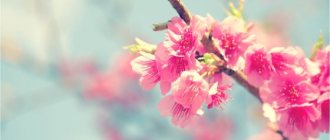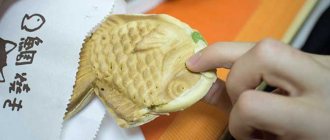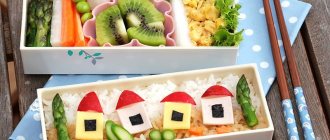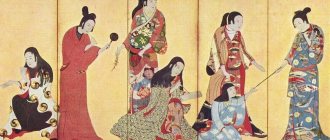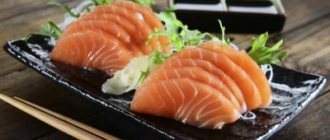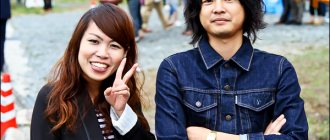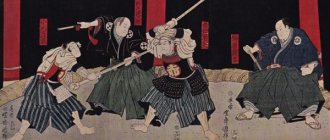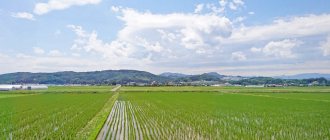PURPOSE OF MEDICINES
Only doctors, dentists and veterinarians are authorized to write prescriptions in Japan. In addition, pharmacists cannot renew or repeat a prescription (for example, for people with chronic diseases). Instead, patients need to see a doctor and get a new prescription each time they need the medicine.
In Japan, the sale of only those medicines is permitted, the production and sale of which is approved by the Japanese government and which are listed in the Japanese Pharmacopoeia.
Prescription drug prices are determined by The National Health Insurance Drug Price Standard. It also specifies the scope of drugs that can be prescribed by doctors under the public health insurance system.
Prescribing under international nonproprietary names (INN) is not mandatory in Japan, nor is generic substitution (although pilot programs have been introduced to encourage it).
Over-the-counter drugs (OTC) may be sold outside of pharmacies. At the same time, the country has a list of OTC drugs that can be dispensed exclusively from pharmacies (pharmacy-only list).
How to eliminate intestinal disorders
Intestinal disorders are an ailment that occupies a leading position in the ranking of common summer diseases. It’s not difficult to guess why they are so “popular”: the abundance of vegetables and fruits, the accelerated growth of microorganisms in food and water under the influence of high temperatures, foreign travel and tours to the tropics are the culprits of rampant intestinal infections in most cases. Of course, the main defense will be an attentive and careful attitude towards yourself. You should wash your hands more often, rinse vegetables and fruits more thoroughly, have antibacterial wipes with you, and try to refrain from street food, especially on a foreign shore. And most importantly, have remedies for digestive disorders with you.
Ready-made solution from Pharmecon - first aid kit for intestinal disorders
Mezim forte - enzymes for digestion Polysorb - sorbent for poisoning and intestinal infections Imodium - fixative Stopdiar - antimicrobial for poisoning and intestinal infections No-shpa - antispasmodic for intestinal pain
Clothes and accessories
It is not very reasonable to buy goods from European brands in Japan - their prices are even higher than in Russia. But locally produced clothing and accessories are definitely worthy of attention.
Sales in Japan start immediately after Catholic Christmas. Moreover, discounts apply even to new collections.
Shopping centers
Japan's best shopping centers are located in central Honshu. The most popular department stores in Tokyo are Mitsukoshi, Seibu, Matsuya, Isetan, Keio. In them, Japanese brands are presented along with European ones. The capital's youth dresses in shops in the Shibuya and Harajuku areas - the best budget and very fashionable brands have settled here. There is no point in listing them - it’s easier to look into these neighborhoods and choose the one that suits you in terms of quality or price. At the same time, look at what Japanese youth wear.
The city of Nagoya is home to Japan's largest underground shopping mall. This is a real city within a city with hundreds of shops to suit every taste. For shopping on Odaiba, head to DiverCity Tokyo Plaza. At the entrance you will be greeted by a huge robot - you definitely won’t pass by. In Kyoto, go shopping at The Cube shopping center.
In Osaka, all the major department stores are in the north in the Kita area, and the smaller shopping pavilions are in the south in the Minami area. Or you can forget this information and go shopping at the World Trade Center - a 55-story building with a bunch of shops, cafes and entertainment.
Boutiques, outlets
The best boutiques in Japan are located in Tokyo (Shinjuku and Ginza areas). In many shopping centers and large cities of the country there are stores of the famous Yohji Yamamoto and Kenzo. Prices are lower than in Russia, and the range is many times wider.
The best outlet stores in Japan are located in and around Tokyo. The most popular is Gotemba Premium Outlets. You can get here by bus. In second place is Shisui Premium Outlets, it is located next to Narita Airport.
Kimono
Many tourists want to bring a kimono from Japan, not as a souvenir, but to wear at home. If you are one of them, avoid shopping in souvenir shops. Go to regular Japanese brand stores in shopping centers: the quality is better and the prices are lower. A factory-made kimono in Japan can be bought for only 1.5-2 thousand yen (in souvenir shops - already for 5-6 thousand). But a real handmade kimono can cost about 200 thousand yen.
Yukata is another useful item from Japan. The same kimono, only made of cotton - a lightweight summer option. Again, shopping in shopping centers is more profitable.
Accessories
Perhaps, in no other place on the planet can you find such a selection of scarves, all kinds of socks (both very feminine and funny), gloves, hats, caps and other accessories. People in Japan really love such products.
A stole made of natural silk can be bought for about 4 thousand yen, but a beret or hat made of bright fabric can cost only a thousand.
In case of rain
Be sure to bring a fashionable umbrella from Japan. The traditional one made of bamboo and wax paper, which all the guidebooks loudly repeat, of course, can also be bought. But it would be much more practical to take a modern version.
There are thousands of them here! And also all kinds of raincoats and bright rubber boots, waterproof bags and other useful things for rainy weather - such goods from Japan will definitely come in handy in life. Prices start at 500 yen per accessory, and you can find them in every shopping center.
Decorations
It is definitely worth bringing jewelry from Japan. Pearls are especially good: the best choice is at the Tasaki Gallery in Tokyo. Prices for designer jewelry in this store start from 60 thousand yen.
It’s even worth bringing jewelry from here. The one made from medical (jewelry) steel is especially good. Now in Japan, decorations from Inori in the form of berries and fruits are trending. They are inexpensive - from 1.5 thousand yen.
Medicines for a trip to nature
Do you love holidays with “savages”? Can't live without hiking, tents, forests and mountains? It’s great that summer gives you the opportunity to enjoy all its colors and get closer to nature. But the worst thing that can happen there is not even a tick bite, cut or burn, but the fact that the nearest medical center and doctor may be hundreds of kilometers away from you. Therefore, an outdoor first aid kit is something that every hiker puts a red marker on their list. We wouldn't want you to get into trouble while you're enjoying the peace and quiet.
Ready-made solution from Pharmecon - a tourist’s first aid kit
, which will not take up much space in your backpack. We put in it: Nurofen Express - for pain, Dolobene gel - for pain, swelling and skin damage, Elastic bandage - for immobilization, Cosmos Plaster - a set of bactericidal plasters, Bandage - for injuries and damage, Chlorhexidine - an antiseptic for treating wounds, Brilliant solution - for treating wounds Esmarch's hemostatic tourniquet - to stop arterial bleeding.
Cold medicines
Despite the fact that it is hot outside, and a swimsuit and aspirin are vigorously packed into a suitcase, there are risks of ruining your vacation, for example, by catching a cold. Especially if you are changing the region of your stay or planning to run romantically in the pouring southern rain and eat ice cream. Changes in climate, diet, air conditioning indoors and heat outside, a new microbial environment can weaken the immune system and provoke disease. To prevent a cold from depriving you of the joy of a long-awaited vacation, we have prepared a special first aid kit for you.
A ready-made solution from Pharmeconom - a first aid kit for colds:
Cytovir-3 is an antiviral drug, Coldrex hotrem Lemon is to relieve cold symptoms, Lazolvan is a cough medicine, Snoop is a cold remedy. Strepsils - a remedy for sore throat
Food and drink
For groceries in Naha (the capital of Okinawa), go to the colorful markets - there are probably no such markets left anywhere else in Japan. There are excellent bazaars in Tokyo, and indeed on the island of Honshu. In Osaka, you can go for gastronomic shopping to the Kuromon Ichiba market.
The most popular chain supermarkets in Japan are Family Mart, 7/11, Lawson, Tesco. In general, almost every large shopping complex has a grocery store on the ground floor.
Sweets
From Sapporo we recommend bringing sweets from the Ishiya chocolate factory. Among other goodies, they make Shiroi Koibito cookies, which can only be bought in Japan and only on the island of Hokkaido. On the island of Miyajima, they sell maple leaf cookies filled with bean paste. It’s worth taking home, if only because it’s delicious (and it’s also a symbol of the island, and it’s not prepared anywhere else).
You can bring sweets to friends from Japan that are not available in Russia: sweets based on black sugar, or even with the taste of burger, cabbage, lamb, bitter radish and other non-obvious products. Bring Hello Kitty sweets to your child from Japan - donuts, straws, sweets, cookies with unusual flavors.
It’s also definitely worth buying ice cream in Japan. In Sapporo - corn with asparagus and cuttlefish ink, in Kamakura - with sweet lilac potatoes. It sounds strange, but it is very tasty. It’s a pity that you can’t take it to Russia.
HEALTHCARE SYSTEM, COSTS AND INSURANCE
In 2021, Japan ranked 5th in the ranking of countries in the world in terms of the efficiency of healthcare systems, compiled by Bloomberg analysts based on data from the World Health Organization (WHO), the United Nations (UN) and the World Bank. For comparison, the UK occupies 21st position, Germany - 39th, the USA - 50th, and Ukraine is not represented in it at all.
According to the same ranking, in 2021, health care spending in Japan amounted to 10.23% of GDP ($3,703 per person), and average life expectancy was 83.59 years.
Japan was the first Asian country to introduce compulsory health insurance on a nationwide scale in 1961. However, a number of insurance laws that partially compensated for the costs of medical care were adopted much earlier: in 1922 - on compulsory insurance for employees, in 1938 - on national health insurance, in 1939 - on insurance of sailors, etc.
Japan's universal health insurance, combined with the existing social insurance system, ensures the health and well-being of the country's citizens. This universal system has allowed Japan to achieve one of the world's highest life expectancies and health standards. The universal system consists of 2 main types of insurance: employee health insurance (Kenko-Hoken) and National health insurance (Kokumin-Kenko-Hoken).
Japanese patients pay only a certain proportion of medical expenses: 30% for the working population, 20% for those under 7 years of age or 70–74 years of age, and 10% for those over 74 years of age. In cases of extremely high medical costs (for example, long-term hospitalization or innovative therapy), monthly costs are limited by the patient's age and income.
According to a 2015 report from Japan's Ministry of Health, Labor and Welfare (), health insurance resources covered 48.6% of national medical expenses; the remaining funds came from government resources (37.5%) and patient payments (13.9%).
